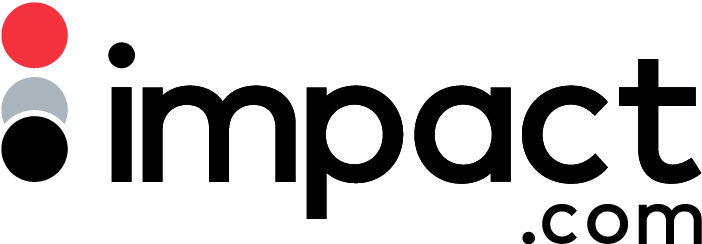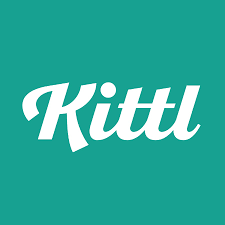If you’re looking to monetize your blog or social media presence, affiliate marketing on Pinterest is a great place to start.
With its visually appealing platform and millions of users, Pinterest offers a lucrative opportunity for affiliate marketers to promote products and earn commissions.
In this guide, we’ll provide you with a step-by-step approach to understanding the basics of affiliate marketing on Pinterest, how to get started, and tips for optimizing your affiliate marketing strategy.
We’ll cover topics such as creating compelling pins, choosing the right affiliate products, and analyzing and adjusting your strategy. So, let’s dive in and get started on your affiliate marketing journey.
Key Takeaways
- Understand the basics of affiliate marketing on Pinterest
- Choose the right affiliate products and create compelling pins
- Analyze and adjust your strategy for optimal results.

In this article, you will learn the basics of affiliate marketing on Pinterest.
You will discover how to get started with affiliate marketing on Pinterest and use Pinterest boards to target your niche audience.
You will also learn how to use Pinterest trends for your affiliate marketing strategy.
This article will guide you through the process of setting up a Pinterest business account and creating a custom website with Hostinger.
You will also understand Pinterest’s affiliate marketing policies and how to choose the right affiliate products.
Additionally, you will learn how to find high-paying affiliate links and create compelling and click-worthy pins.
You will also discover how to create viral content on Pinterest and optimize your pin descriptions and keywords.
Finally, you will learn how to join group boards and collaborate with others, as well as analyze and adjust your strategy.
Understanding the Basics of Affiliate Marketing on Pinterest
If you’re new to affiliate marketing, it’s important to understand the basics before diving into Pinterest.
Affiliate marketing is a performance-based marketing strategy where you earn a commission for promoting someone else’s products or services.
As an affiliate marketer, your goal is to drive traffic and generate sales through your unique affiliate links.
Pinterest is an ideal platform for affiliate marketing due to its visual nature.
The platform is known for its stunning images and creative content, making it a hub for inspiration and discovery.
By strategically leveraging this visual appeal, you can create eye-catching pins that entice users to click on your affiliate links and make a purchase.
To be successful with affiliate marketing on Pinterest, it’s important to create high-quality pins that are both visually appealing and informative.
Consider using text overlays to highlight key features and benefits of the product or service you’re promoting.
You should also make sure your pins are optimized for search by using relevant keywords in your pin descriptions and board titles.
Finally, it’s important to disclose your affiliate relationship with your audience.
This can be done by including a disclaimer in your pin description or on your website.
By being transparent about your affiliate relationship, you can build trust with your audience and increase the likelihood of them making a purchase through your links.
How to Get Started with Affiliate Marketing on Pinterest?
To get started with affiliate marketing on Pinterest, the first step is to sign up for a Pinterest business account.
This will give you access to valuable analytics and promotional tools that are essential for effective affiliate marketing.
Once you have your business account set up, start creating boards and pins that align with your niche and target audience.
Remember to create multiple pins for each piece of content and apply SEO principles to your board and pin descriptions to improve discoverability.
Using Pinterest Boards to Target Your Niche Audience
Pinterest boards are a great way to target your niche audience and promote your affiliate products.
By curating boards that are engaging and valuable to your target audience, you can attract followers who are interested in your affiliate products.
To create effective boards, it’s important to choose topics that are relevant to the products or services you plan to promote.
For example, if you’re an affiliate for a beauty brand, you might create boards dedicated to skincare, makeup tutorials, and beauty tips.
When naming your boards, use descriptive and keyword-rich titles.
This will not only help Pinterest users find your boards but also improve their visibility in search results.
Additionally, write detailed descriptions for each board, including relevant keywords and hashtags.
Once you have your boards set up, it’s time to start promoting your affiliate products.
One effective strategy is to join group boards in your niche.
By joining relevant group boards, you can reach a wider audience and increase the visibility of your pins.
When pinning to group boards, make sure to follow the board’s rules and guidelines to maintain a positive and collaborative community. It’s also important to actively engage with the
Pinterest community by commenting on pins, repinning content from other users, and following accounts that align with your niche.
Next, take advantage of Pinterest’s board feature to organize your affiliate pins.
Create boards that align with your niche or the products you are promoting.
For example, if you are an affiliate marketer in the fitness industry, you could create boards for workout routines, healthy recipes, and fitness gear.
When pinning affiliate products or content that aligns with your niche, make sure to include a compelling and keyword-rich description for each pin.
This will help attract users and increase the chances of them clicking through to your affiliate link.
It’s important to strike a balance between promoting your affiliate products and providing valuable content.
Users are more likely to engage with pins that offer something of value, whether it’s a helpful tip, a DIY project, or style inspiration.
Building relationships and establishing yourself as a trusted authority in your niche will not only increase your visibility but also attract a loyal following.
They will be more likely to trust your recommendations and make purchases through your affiliate links.
In summary, to effectively use Pinterest boards to target your niche audience, you should:
- Choose topics that are relevant to the products or services you plan to promote
- Use descriptive and keyword-rich titles for your boards
- Join relevant group boards in your niche
- Engage with the Pinterest community by commenting on pins, repinning content, and following accounts
- Create boards that align with your niche or the products you are promoting
- Include compelling and keyword-rich descriptions for each pin
- Provide valuable content in addition to promoting your affiliate products
- Build relationships and establish yourself as a trusted authority in your niche.
Using Pinterest Trends for Affiliate Marketing Strategy
To stay ahead of the game, it is essential to keep up with the latest trends on Pinterest.
By utilizing tools like Pinterest Trends or Google Trends, you can gain insights into what topics and products are currently popular on the platform.
By incorporating these trends into your strategy, you can increase the discoverability of your pins, attract a more targeted audience, and ultimately improve your chances of earning commissions.
It’s important to regularly monitor your analytics to identify which pins are generating the most clicks and conversions.
Experimenting with different pin designs, descriptions, and calls to action can help you optimize your affiliate marketing efforts and maximize your earnings.
Remember, affiliate marketing on Pinterest offers a unique opportunity to leverage the platform’s visual appeal and reach a wide audience.
By following these tips and consistently refining your strategy, you can establish a successful affiliate marketing presence on Pinterest and earn commissions by promoting products you love.
1. Set Up a Pinterest Business Account
The first step to getting started in affiliate marketing on Pinterest is to utilize a Pinterest business account.
A Pinterest business account will provide you with access to valuable features and analytics that can help you track the performance of your affiliate pins.
To create a Pinterest business account:
- Go to the Pinterest Business website and click on “Join as a business.”
- Follow the prompts to provide the necessary information, such as your email address, business name, and website.
- Verify your website by adding a snippet of code to your website or uploading an HTML file provided by Pinterest.
- Complete your profile by adding a profile picture, bio, and relevant keywords.
How To Create a Custom Website with Hostinger
Instead of directly linking your affiliate links on Pinterest, it’s advisable to create a custom website to showcase all your affiliate links.
Ready, set, publish—create your website in a flash with Hostinger AI Website Builder. Tell us what you need, and our AI will do the rest. 30-Day Refund Policy. Fast and Easy Setup. Trusted Worldwide. Intuitive website builder.
This will help you avoid the risk of having your Pinterest account taken down.
Hostinger is a recommended platform to create your website, and you can access it by clicking on the provided link.
Hostinger offers an easy-to-use website builder with AI tools.
Sign up for a business plan, which provides access to AI tools and e-commerce features.
Follow the setup prompts and use AI to customize your website’s design and content.
You can even create custom content for your affiliate links using AI.
Hostinger offers a logo generator tool as well.
Once your website is ready, make sure to include your affiliate links strategically and create a smooth user experience for visitors.
Once you have set up your Pinterest business account, it’s important to optimize your profile to attract your target audience. Start by choosing a profile picture that represents your brand or business.
This could be a logo or a professional headshot if you are the face of your brand.
In your bio, provide a concise and compelling description of your business and what you offer. Use relevant keywords to help Pinterest users find your profile when they search for related topics.
Consider including a call-to-action in your bio, such as directing users to your website or encouraging them to follow your boards for more content.
Remember to regularly monitor the performance of your affiliate pins using the analytics provided by Pinterest.
This will allow you to track metrics such as impressions, clicks, and saves.
Analyzing this data will help you understand which pins are performing well and which ones may need optimization.
Setting up a Pinterest business account is the first step in utilizing Pinterest for affiliate marketing.
By optimizing your profile, creating relevant boards, and pinning strategically, you can attract your target audience and drive traffic to your affiliate links.
Regularly analyzing the performance of your pins will enable you to make data-driven decisions and further optimize your affiliate marketing strategy on Pinterest.
2. Understand Pinterest’s Affiliate Marketing Policies

Before you start promoting affiliate products on Pinterest, it’s essential to familiarize yourself with the platform’s affiliate marketing policies.
Pinterest has specific guidelines that you need to adhere to to avoid any potential account suspension or penalties.
Some key points to keep in mind include:
- Avoid using affiliate links in your profile bio or on your profile image.
- Disclose your affiliate relationships by adding a clear and conspicuous disclosure statement on each pin that contains an affiliate link.
- Do not use misleading or deceptive tactics to drive traffic to your affiliate links.
- Ensure that the destination URL of your affiliate links is relevant and provides value to the users.
Pinterest values transparency and user experience, so it’s crucial to understand and comply with their policies.
By avoiding the use of affiliate links in your profile bio or on your profile image, you ensure that your account remains in good standing.
Pinterest wants users to have a genuine and authentic experience on the platform, so it’s important to be upfront about your affiliate relationships.
One way to do this is by adding a clear and conspicuous disclosure statement on each pin that contains an affiliate link.
This disclosure should be easily visible and inform users that you may earn a commission if they make a purchase through your link.
By being transparent about your affiliations, you build trust with your audience and maintain the integrity of your content.
You can add a hashtag (#) symbol in your pin’s description box if you are adding an affiliate link to your pin. If you pin a blog post, then just add your link to your blog post.
Additionally, it’s essential to avoid using misleading or deceptive tactics to drive traffic to your affiliate links.
Pinterest wants users to have a positive experience on the platform, so it’s crucial to provide accurate and honest information.
Misleading users with clickbait or false promises not only goes against Pinterest’s policies but also damages your credibility as an affiliate marketer.
Lastly, when using affiliate links on Pinterest, make sure that the destination URL is relevant and provides value to the users.
Pinterest is a visual discovery engine, and users come to the platform to find inspiration, ideas, and solutions.
If your affiliate link leads to an unrelated page or doesn’t provide value to the users, it not only goes against Pinterest’s policies but also diminishes the user experience.
By understanding and following Pinterest’s affiliate marketing policies, you can effectively promote affiliate products while maintaining a positive relationship with the platform and your audience.
It’s important to stay informed about any updates or changes to these policies to ensure your affiliate marketing efforts on Pinterest remain compliant and successful.
3. Choose the Right Affiliate Products

Once you have set up your Pinterest business account and familiarized yourself with the platform’s policies, it’s time to choose the right affiliate products to promote.
Selecting the right products is crucial for success in affiliate marketing.
Here are a few tips to help you choose the right affiliate products:
- Focus on products that are relevant to your niche and align with your audience’s interests.
- Consider the commission rates offered by different affiliate programs.
- Look for products that have high demand and positive reviews.
- Ensure that the affiliate program provides adequate promotional materials, such as banners, images, or videos.
When choosing affiliate products, it’s important to consider your niche and the interests of your audience.
By selecting products that are relevant to your niche, you can ensure that you are reaching the right audience that is more likely to be interested in purchasing those products.
For example, if your niche is fitness and wellness, you may want to promote products such as fitness equipment, health supplements, or workout apparel.
Find High-Paying Affiliate Links
Once you have decided on a topic, it is time to look for high-paying affiliate links.
Impact.com is one of the best platforms for finding such links. You can set up an account on impact.com by clicking the link.
Impact.com is the best platform to find high-paying affiliate links. It's easy to get started, apply to become an affiliate of well-known brands, and start promoting your links.
While your account may not be approved immediately, you can improve your chances by consistently posting content on Pinterest.
If impact.com does not work for you, you can also look into Amazon Associates, ClickBank, and Digistore24 affiliate links.
In addition to relevance, it’s also crucial to consider the commission rates offered by different affiliate programs.
Higher commission rates can significantly impact your earnings, so it’s important to compare the rates offered by various programs before making a decision.
However, it’s important to strike a balance between commission rates and the quality of the product.
It’s better to promote a high-quality product with a slightly lower commission rate than a low-quality product with a higher commission rate.
Another factor to consider when choosing affiliate products is the demand and reviews of the product.
Products that have a high demand are more likely to attract customers, increasing your chances of earning commissions.
Additionally, positive reviews can help build trust and credibility among your audience, making them more likely to purchase the product you are promoting.
Lastly, it’s essential to ensure that the affiliate program provides adequate promotional materials.
These materials, such as banners, images, or videos, can make it easier for you to promote the product on your Pinterest account.
Having access to high-quality promotional materials can save you time and effort in creating your own content.
This can also enhance the overall presentation of your pins, making them more appealing to your audience.
By following these tips and carefully selecting the right affiliate products, you can increase your chances of success in affiliate marketing on Pinterest.
Remember to regularly review and update your product selection to stay relevant and meet the evolving needs and interests of your audience.
4. Create Compelling and Click-Worthy Pins
The key to success with affiliate marketing on Pinterest lies in creating visually appealing and click-worthy pins.
Here are some tips to help you create compelling pins that drive clicks and engagement:
- Use high-quality images that are relevant to the product you’re promoting. High-resolution images not only capture attention but also provide a clear representation of what users can expect from your product. Whether it’s a mouth-watering food dish or a stunning landscape, make sure the image is captivating and instantly grabs the viewer’s attention.
- Add text overlays to your images to provide additional context or call-to-action. While images alone can be powerful, adding text overlays can enhance the message you want to convey. Use bold and easy-to-read fonts that complement your image and highlight the key features or benefits of your product. Whether it’s a limited-time offer, a discount code, or a compelling tagline, make sure the text is concise and enticing.
- Create multiple pin variations to test and optimize for better performance. Experimenting with different pin designs and layouts can help you identify what works best for your audience. Test variations in color schemes, image compositions, and text placement to see which pins generate the most clicks and engagement. By analyzing the performance of each pin, you can refine your strategy and create more effective pins in the future.
- Utilize Pinterest’s built-in features, like RichPins, to provide more information about the product. Rich Pins are a powerful tool that allows you to add extra details to your pins, such as pricing, availability, and product descriptions. By enabling Rich Pins, you provide users with valuable information upfront, making it easier for them to make informed decisions. This additional context can increase the likelihood of users clicking through to your website and converting into customers.
Create Viral Content on Pinterest
To effectively promote your affiliate links on Pinterest, you need to create viral content. The good news is that you can use artificial intelligence (AI) to create images for your pins.
One AI tool you can use is called Kittl, which you can try for free by clicking on the provided link.
To create images with Kittl, start by selecting a suitable artboard size, preferably a larger poster size for Pinterest.
I recommend browsing Pinterest for image inspiration before using Kittl.
Kittl is the most intuitive and easy-to-use design software to help you create stunning designs that impress everyone. Affordable to use. The affordable paid plans come with a commercial license.
Kittl offers various features, including AI-generated backgrounds and the ability to remove backgrounds.
Experiment with different text options, fonts, colors, and elements to make your images visually appealing and attention-grabbing.
Once you’re satisfied with your design, download it in PNG format for optimal quality on Pinterest.
Remember, the goal of creating compelling and click-worthy pins is to entice users to take action.
By implementing these tips and continuously monitoring your pin performance, you can optimize your Pinterest strategy to drive more traffic and increase engagement to your website or online store.
5. Optimize Your Pin Descriptions and Keywords
Optimizing your pin descriptions and using the right keywords is crucial for getting your affiliate pins discovered by Pinterest users. Here are some tips to help you optimize your pin descriptions:
- Write clear and concise descriptions that highlight the benefits or unique selling points of the product. For example, if you are promoting a skincare product, you can mention how it can improve the user’s complexion or reduce wrinkles.
- Incorporate relevant keywords naturally into your pin descriptions. This will help Pinterest understand what your pin is about and show it to users who are searching for those keywords. For instance, if you are promoting a recipe for chocolate chip cookies, you can include keywords like “chocolate chip cookies,” “homemade cookies,” and “baking recipe.”
- Use relevant hashtags to increase the discoverability of your pins. Hashtags make your pins more searchable and can help you reach a wider audience. For example, if you are promoting a fitness product, you can include hashtags like #fitnessgoals, #workoutmotivation, and #healthylifestyle.
- Consider conducting keyword research to identify popular and relevant keywords in your niche. This will give you insights into what people are searching for and allow you to optimize your pin descriptions accordingly. There are various tools available, such as Google Keyword Planner and SEMrush, that can help you find the right keywords for your pins.
By optimizing your pin descriptions and using the right keywords, you can increase the visibility of your affiliate pins on Pinterest and attract more targeted traffic to your website or blog.
Remember to regularly analyze and refine your pin descriptions and keywords to stay ahead of the competition and maximize your affiliate marketing success on Pinterest.
6. Join Group Boards and Collaborate with Others
Group boards are a great way to expand the reach of your affiliate pins and connect with like-minded individuals in your niche. Here’s how you can make the most of group boards:
- Find and join group boards that are relevant to your niche and have an engaged audience.
- Follow the group board’s rules and contribute valuable content regularly.
- Collaborate with other pinners by repinning their content and engaging with their pins.
- Consider reaching out to other pinners or bloggers for potential collaboration opportunities.
When it comes to finding relevant group boards, there are a few strategies you can employ. Start by searching for group boards within your niche using Pinterest’s search function.
You can enter keywords related to your niche and filter the results to show only group boards.
Take the time to explore different boards and assess their relevance and engagement levels.
Another effective way to find group boards is by leveraging the power of Pinterest communities.
Joining niche-specific communities can provide you with valuable insights and connections.
Engage with the community members, ask for recommendations, and share your expertise.
This will not only help you discover relevant group boards but also establish yourself as an active and valuable member of the community.
Once you have identified the group boards you want to join, make sure to carefully read and follow their rules. Each group board may have specific guidelines for pinning frequency, content type, and engagement requirements.
Adhering to these rules will ensure that you maintain a positive relationship with the board owner and other members.
When participating in group boards, it’s crucial to contribute valuable content regularly. Avoid spamming the board with only your affiliate pins. Instead, aim to provide a mix of your own content and curated pins from other sources.
This will demonstrate your expertise and willingness to engage with the community.
Collaborating with other pinners is an excellent way to expand your reach and build relationships.
Repin content from other pinners within the group board and engage with their pins by leaving thoughtful comments and sharing valuable insights.
This reciprocity will encourage others to do the same for your pins, increasing their visibility and engagement.
Additionally, consider reaching out to other pinners or bloggers within your niche for potential collaboration opportunities.
This could involve guests pinning on each other’s boards, co-creating content, or cross-promoting each other’s affiliate products.
By collaborating with others, you can tap into their audience and expand your reach even further.
Group boards offer a valuable opportunity to connect with like-minded individuals, expand your reach, and increase the visibility of your affiliate pins.
By finding relevant group boards, following their rules, contributing valuable content, and collaborating with others, you can maximize the benefits of group board participation and take your affiliate marketing efforts to new heights.
7. Analyze and Adjust Your Strategy
As with any marketing strategy, it’s important to regularly analyze the performance of your affiliate pins and make adjustments accordingly.
Pinterest provides analytics tools that can help you track important metrics such as impressions, clicks, and saves.
Here’s how you can use analytics to improve your affiliate marketing strategy:
- Identify the pins that are performing well and try to replicate their success.
- Experiment with different pin designs, descriptions, and keywords to optimize your results.
- Track the conversion rates and earnings generated from your affiliate pins.
- Stay updated with the latest trends and adapt your strategy accordingly.
By analyzing the performance of your affiliate pins, you can gain valuable insights into what is resonating with your audience and what is not.
For example, if you notice that certain pin designs are generating more clicks and saves, you can focus on creating similar designs to increase engagement.
Similarly, if you find that specific keywords are driving more traffic to your affiliate pins, you can optimize your descriptions and titles to include those keywords.
Tracking conversion rates and earnings is crucial in determining the success of your affiliate marketing efforts. By monitoring these metrics, you can identify which pins are driving the most sales and revenue.
This information can help you prioritize your efforts and allocate resources to the pins that are delivering the best results.
Furthermore, staying updated with the latest trends is essential for staying relevant in the fast-paced world of affiliate marketing.
Final Thoughts
Pinterest is constantly evolving, and new trends and features emerge regularly.
By keeping an eye on industry news and staying active in relevant communities, you can ensure that your strategy remains current and effective.
Remember, the key to a successful affiliate marketing strategy on Pinterest is to continuously analyze, experiment, and adapt.
By leveraging the analytics tools provided by Pinterest and staying proactive in your approach, you can optimize your affiliate pins for maximum engagement, conversion, and revenue.










